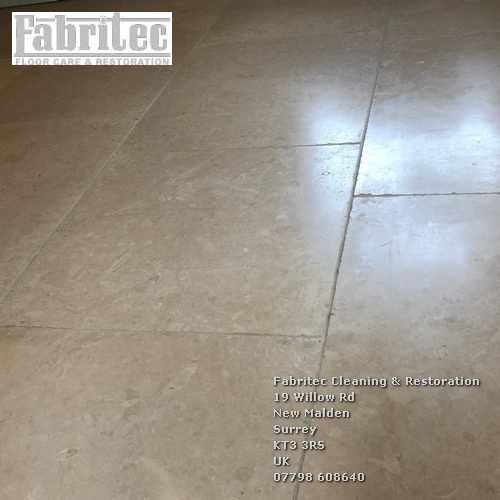
Limestone Cleaning Epsom
Check Out Terrific Limestone Cleaning Epsom
- Limestone cleaning specialists are here for you.
- Our team have been cleaning and restoring Limestone floors around the Epsom area for over two decades.
- Make contact now for your free of charge Limestone cleaning quote.
How Do Professionals Clean A Limestone Floors In Epsom
- We set out by applying a Limestone floor cleaning solution on the floor. Then leave the cleaner for around 20 minutes in order to break down any grease laden. We also use industrial scrubbing machines to scrub the cleaning solutions into the surface of the Limestone.
- After the scrubbing stage, we rinse and vacuum away the slurry and examine the state of the Limestone. We keep scrubbing and rinsing until the floor has released all the soil. On polished and honed Limestone floors, one scrubing stage is normally enough to clean out any dirt. Having said that, with Tumbled Limestone floors and Brushed Limestone tiles, the cleaning and scrubbing may require to be frepeated.
- After machine scrubbing, there can still be trapped soil in the surface of Tumbled and Brushed Limestone, and in the grout.
- If there is some ingrained soil after scrubbing, we have hot pressure rinsing machinery. Hot pressure rinsing drives heated water deep within the pores and holes in the tiles and the grout, to access the soil that a scrubbing machine could not reach. It is often remarkable how much more dirt the pressure rinsing equipment extracts.
- pressurised rinsing may possibly not be suited to very porous or soft Limestone, as it can create a shadow pattern with the rinsing..
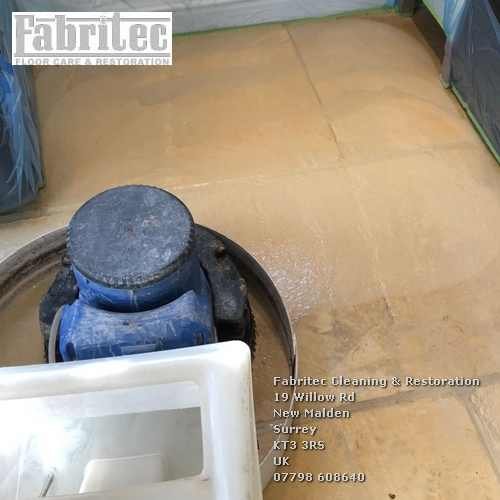
How Is Limestone Polished?
Limestone polishing is necessary when the shine has worn off the polished Limestone through wear and etch damage.
Polishing Limestone floors starts with diamond honing equipment to take out the surface flaws to prepare the Limestone for polishing.
Fine diamond tooling generates a honed or sheen shine. If you prefer a high , after diamond polishing, we use Limestone polishing compound to give a polished luster.
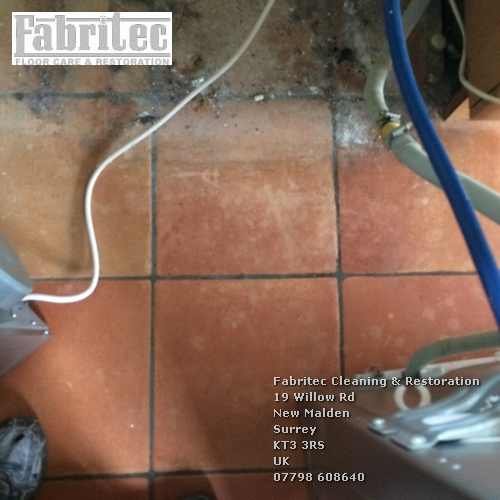
Our Limestone Floor Restoration Process
Limestone restoration commences by examining the Limestone for any damage. Typically the use of powerful cleaners and also foot traffic damages the surface over Limestone.
The result is a scratched, permeable surface with tiny, holes that attract soil. When this occurs, the initial surface is removed by grinding and also honing.
This method is called floor restoration. We use different Limestone floor restoration products such as; diamonds for grinding and also honing, epoxy fillers, grout and polishing powders to create a high shine.
Wear on aged Limestone floors is a consequence of many years, perhaps decades, of footfall. Laminations within the Limestone can break up, slabs may crack, and also the linestone subfloor cound move.
The wear is a reminder of your floor's historical past, so it's often preferable to accept these flaws instead of disrupt an old Limestone floor. Most of the time, these heratige floors are laid in listed heritage buildings and also any work is strictly governed via the Heritage authorities.
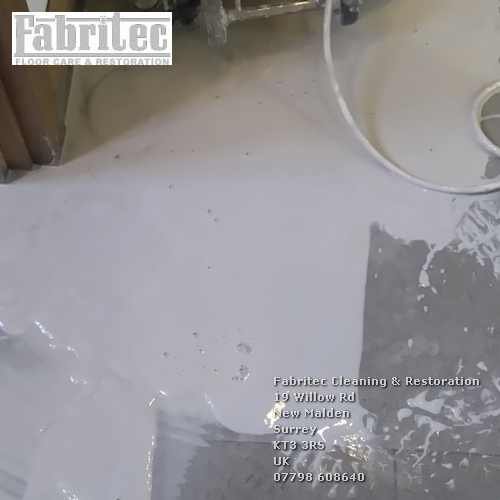
Call Now for a Free No-Obligation Quotation.
We are trusted  by 100's of clients in Surrey.
by 100's of clients in Surrey.
Learn about additional natural stone restoration solutions we deliver in Epsom , simply click on the stone link.
Marble Travertine Terrazzo Slate Sandstone Granite Victorian Tiles Terracotta Quarry Tiles Porcelain Tile & GroutLimestone Sealing In Epsom
Sealing Limestone starts by assessing the type of Limestone as well as the condition with the floor base.
Sealing A Limestone Floor Lacking A Damp Proof Membrane Layer
Limestone has been a flooring from the stone age. Buildings prior to the 1950s can have their stone floors installed right onto rammed earth, a chalk base or lime mortar.
These kinds of types of floors have to permit the passage of moisture from the sub-floor, which impacts the selection of the sealer.
These floors should be sealed with a penetrating sealer to keep the free movement of moisture.
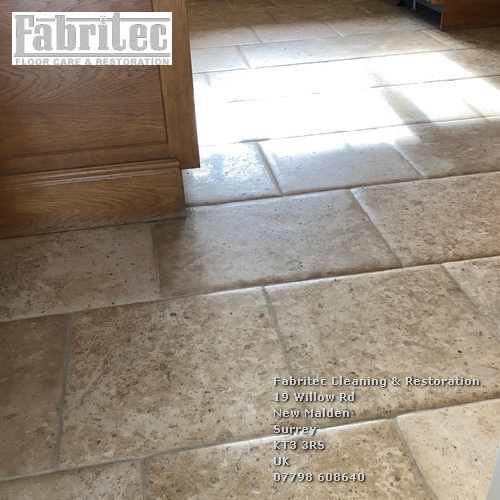
Sealing A Polished Limestone Floor
Polished Limestone is typically sealed with a penetrating impregnating sealer. 1 or 2 coats of impregnating sealer is usually sufficient to stop water penetrating into the stone. There is not a lot of sealer a polished Limestone, so the sealer should be topped up each year. An impregnating sealer will not prevent acid spills etching the Limestone. {Which means that acid spills such as [xfield_acid-spills] will penetrate the impregnating sealer on your own Limestone floor, leaving a dull etch mark.} If the spill on your Limestone has a strong colour, the etch mark will also be stained.
Sealing Honed Limestone Floor Tiles
Honed Limestone tiles will have a matt or sheen finish. Stone is more porous than polished Limestone, but less permeable than tumbled Limestone. If you prefer a natural matt-look, an impregnating sealer retains the initial finish. Just like polished Limestone, an impregnating sealer does not stop acid etching.
Honed Limestone may have film-forming or surface sealers. Since name for the sealer implies, the sealer forms a protective film the outer lining of the Limestone tiles. The film gives extra protection against damage from acid etching. The protective film will act as a sacrificial wear layer, absorbing the damage from foot traffic as opposed to the tile . Since the sealer is the outer lining of the Limestone, we recommend applying an impregnating sealer first. The impregnating sealer helps to protect the stone in places where the surface film wears .
A surface sealer can last for 2 to 4 years before it requires to be re-applied. We recommend examining high wear areas every six months to check on for wear. If a region is indicating wear, deep clean the spot to remove any surface soil, then top the area up with a couple layers of new surfcae sealer.
Following this system, a sealer can last for a long time, without suffering from an awful build-up of sealer on parts of the floor that don’t need more sealer.
